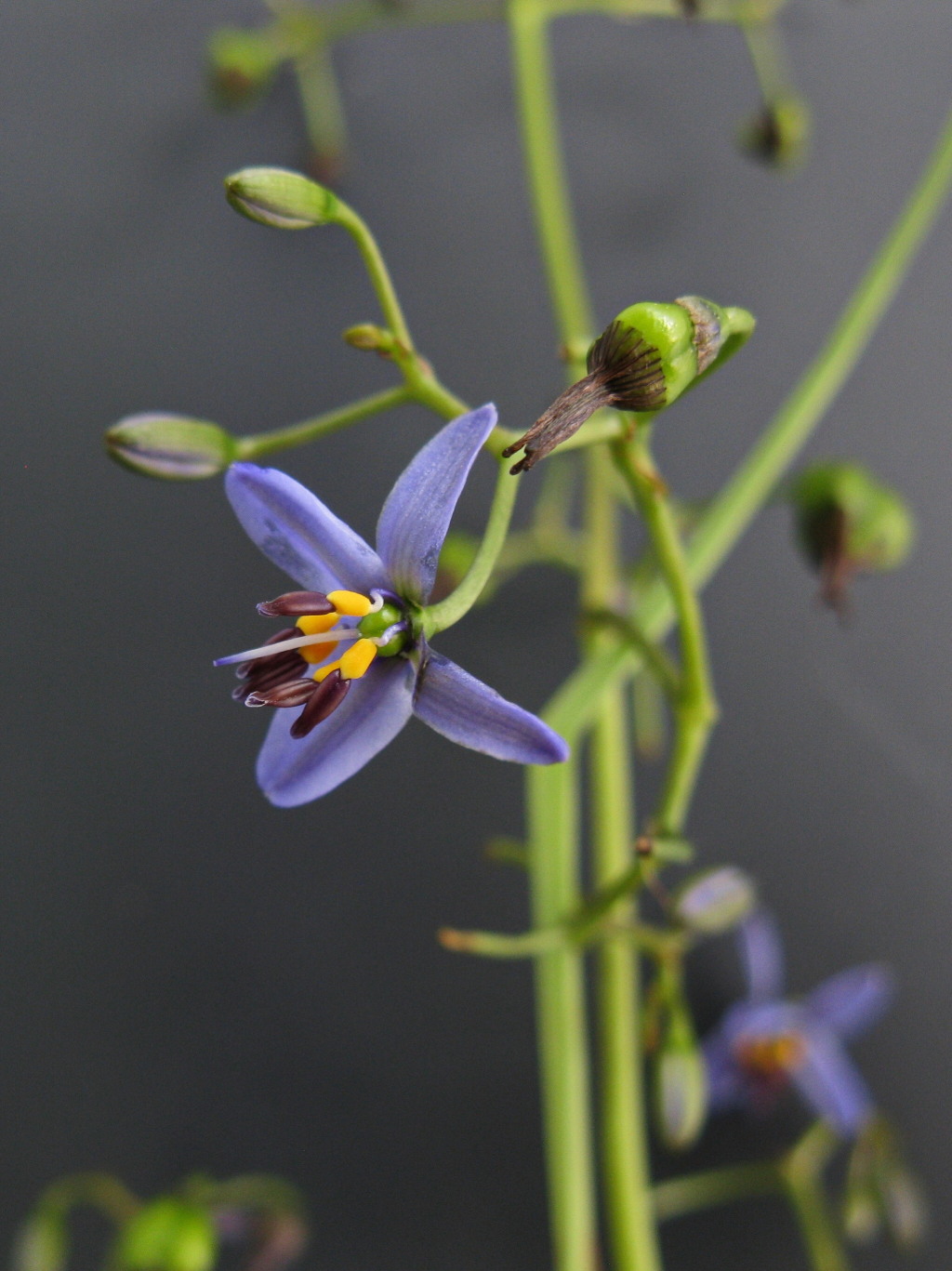Dianella brevicaulis
(Ostenf.) G.W.Carr & P.F.HorsfallClosely tufted plant to 50 cm tall. Leaves mostly erect, closely sheathing at base, 15–65 cm long, 4–10 mm wide, margins recurved (drying to revolute), smooth, abaxial midrib smooth, blade pale to dark green, not glaucous, more or less concolorous. Flowers 10–20 mm wide, blue to violet; perianth segments spreading to recurved; stamens shorter than perianth segments, filament swellings (strumae) yellow, shorter than the dark brown or black anthers. Berry ovoid to globular, 4–10 mm long; seed 2–5 mm cliam.Inflorescence shorter than the foliage, with spreading branches. Berry lumpy-globoid, c. 5 mm long, shining purple; seeds flattened-ellipsoid, c. 4 mm long, black, smooth and shining. Flowers Oct.–Dec.
LoM, MuM, Wim, GleP, Brid, VVP, VRiv, GipP, OtP, WaP, Gold, CVU, GGr, DunT, NIS, EGL, HSF, OtR, Strz. Also WA, SA, Tas. Generally occurring on sandy soil chiefly near the coast, sometimes on exposed dunes, with inland occurrences in mallee-heath communities in the Little Desert and on heavier soils in Themeda grassland west of Melbourne. A collection from c. 20 km south of Numurkah may also be referable to this variety, but further confirmatory collections are required.
Conran, J.G. (1994). Liliaceae. In: Walsh, N.G.; Entwisle, T.J., Flora of Victoria Vol. 2, Ferns and Allied Plants, Conifers and Monocotyledons, pp. 637–686. Inkata Press, Melbourne.
 Spinning
Spinning


